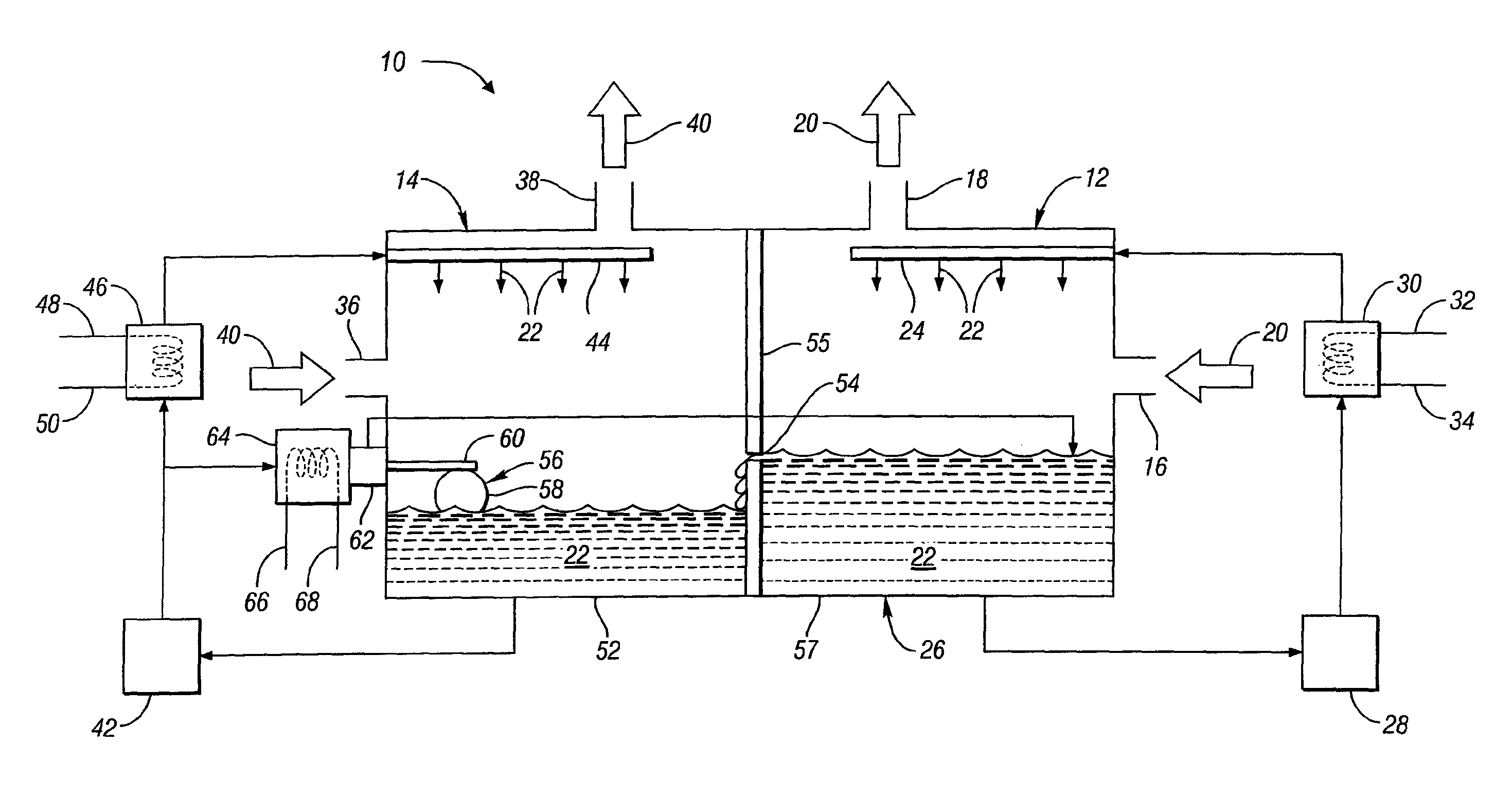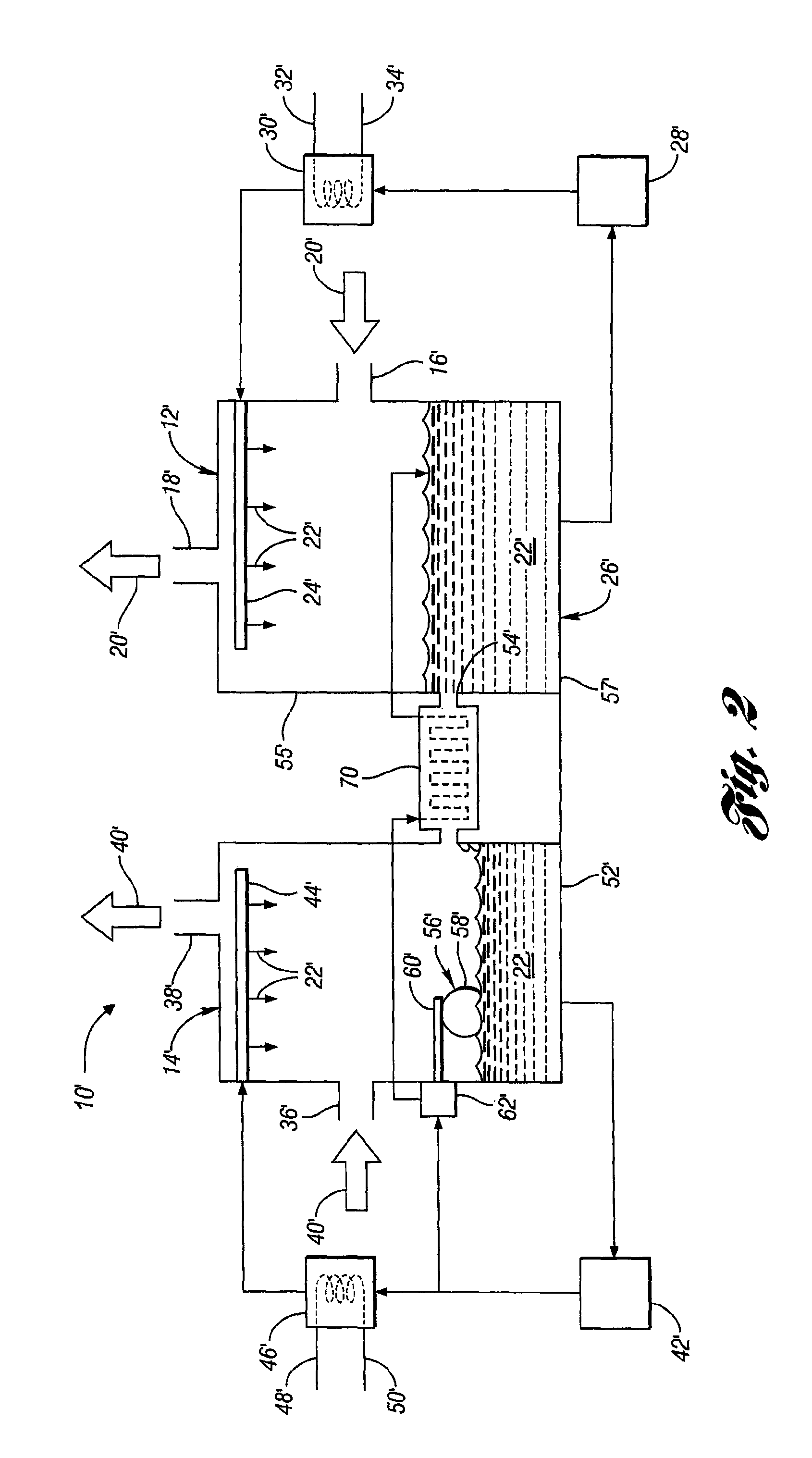System and method for managing water content in a fluid
a technology of water content and management system, applied in the direction of combustion air/fuel air treatment, machine/engine, combustion gas purification/modification, etc., can solve the problems of inefficiency of conventional water management system, inability or difficult to remove water using condensation system, and inability to achieve the effect of maintaining water quality
- Summary
- Abstract
- Description
- Claims
- Application Information
AI Technical Summary
Benefits of technology
Problems solved by technology
Method used
Image
Examples
Embodiment Construction
[0026]FIG. 1 shows a system 10 for managing water content in a fluid in accordance with one embodiment of the present invention. In particular, the system 10 is configured to manage the water content in air—either to collect water from the air for storage and subsequent use, or to control the humidity of the air. It is worth noting that although the examples presented herein utilize ambient air as the fluid whose water content is being managed, the present invention is capable of managing the water content of other fluids as well. The system 10 includes a first chamber, or collection chamber 12, and a second chamber, or regeneration chamber 14. The collection chamber 12 includes an inlet 16 and an outlet 18 which allow a first airflow 20 to flow through the collection chamber 12. As the air flows through the collection chamber 12, it contacts a desiccant 22, which, in the embodiment shown in FIG. 1, is sprayed into the chamber 12 via a conduit 24.
[0027]As the air moves through the c...
PUM
| Property | Measurement | Unit |
|---|---|---|
| height | aaaaa | aaaaa |
| width | aaaaa | aaaaa |
| water content | aaaaa | aaaaa |
Abstract
Description
Claims
Application Information
 Login to View More
Login to View More - R&D
- Intellectual Property
- Life Sciences
- Materials
- Tech Scout
- Unparalleled Data Quality
- Higher Quality Content
- 60% Fewer Hallucinations
Browse by: Latest US Patents, China's latest patents, Technical Efficacy Thesaurus, Application Domain, Technology Topic, Popular Technical Reports.
© 2025 PatSnap. All rights reserved.Legal|Privacy policy|Modern Slavery Act Transparency Statement|Sitemap|About US| Contact US: help@patsnap.com



